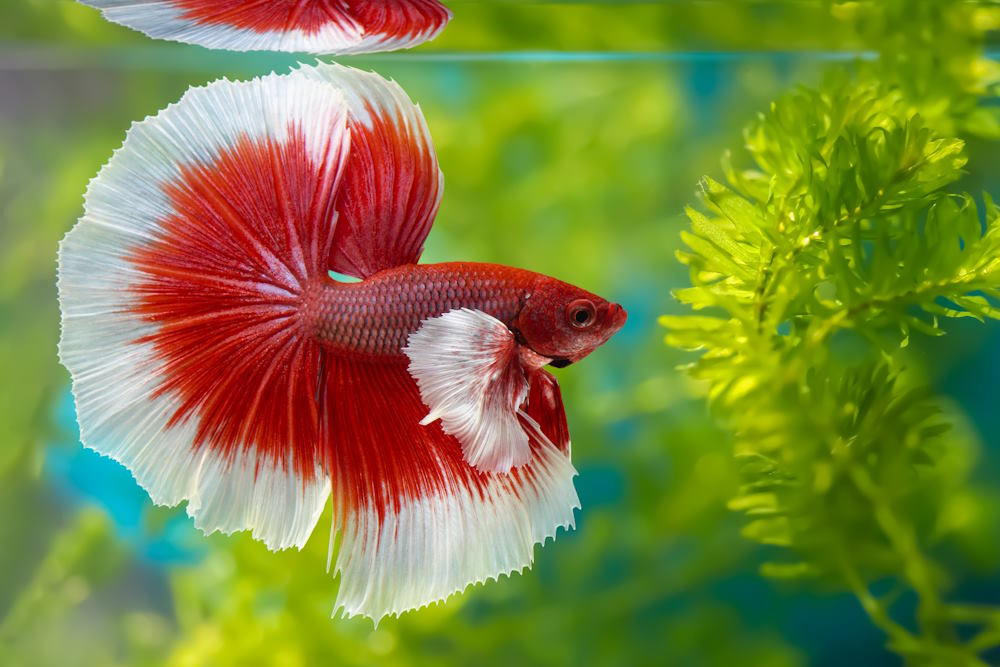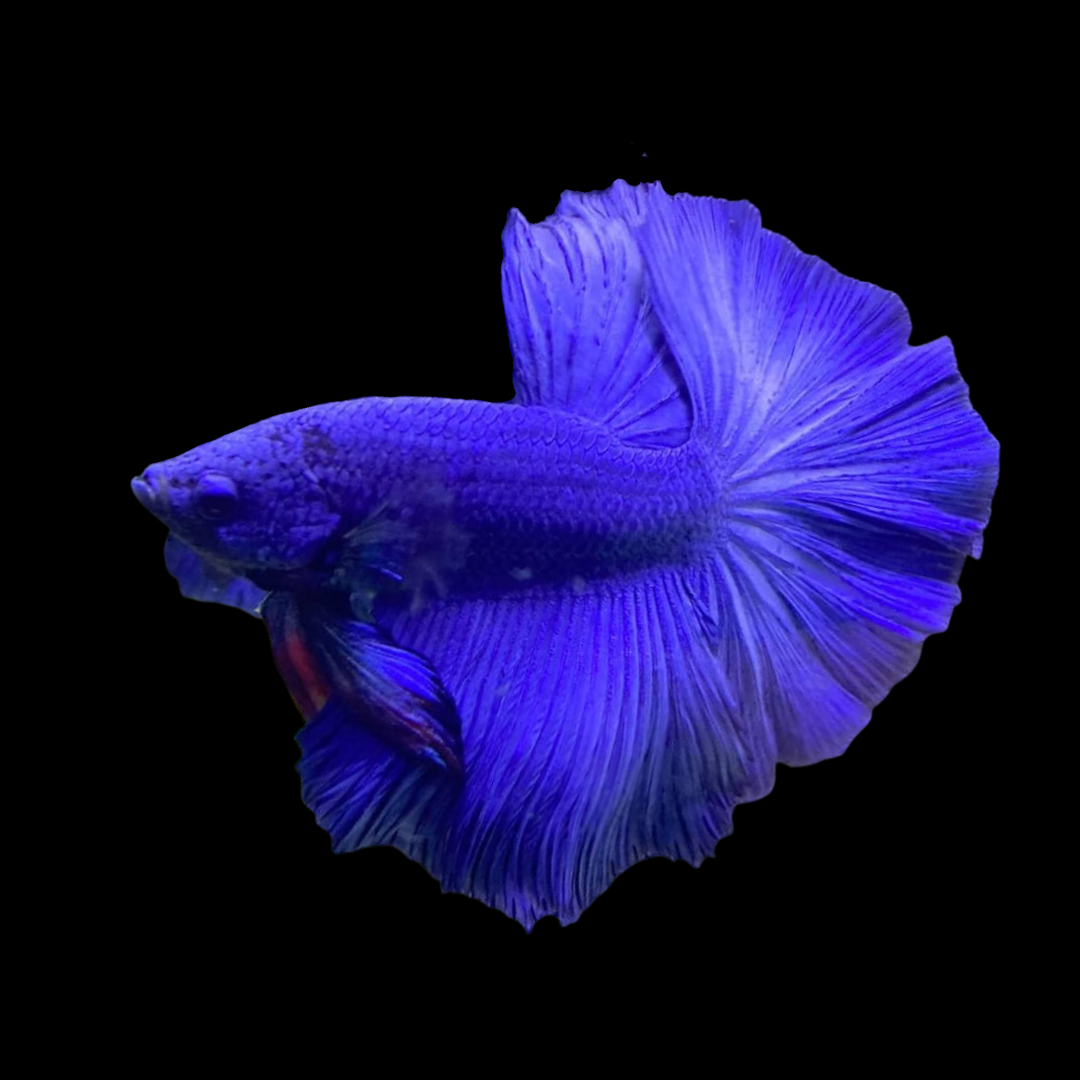Betta Fish Diet Regimen: What to Feed Your Betta for Optimum Wellness
Wiki Article
Breeding Betta Fish: a Comprehensive Step-By-Step Overview to Efficiently Raising Child Bettas From Eggs to Adulthood
Breeding Betta fish is a meticulous endeavor that requires careful preparation and implementation to ensure the successful growth of fry from eggs to develop fish. As the male Betta carefully constructs a bubble nest and guards the priceless eggs, the succeeding phases of treatment and transition demand attention to information and expertise of ideal practices.
Choosing Breeding Pairs
When starting the trip of breeding Betta fish, picking the right breeding pairs is essential to accomplishing desirable qualities and a healthy and balanced lineage - betta fish. The primary step in this process is to recognize the certain qualities you want to improve or protect, such as color, fin type, and body form. It is important to choose genetically varied sets to avoid inbreeding, which can bring about health and wellness issues and undesirable attributesExamine possible reproducing candidates carefully. A healthy and balanced male Betta should show vivid colors, an energetic disposition, and well-formed fins, while the woman should also show vibrant coloration and a rounded stomach, indicating preparedness for spawning. Observing the character of both fish is vital, as aggressive or overly reluctant individuals might not reproduce effectively.
Keeping documents of the parent fish's origins can help you track genetic qualities and possible problems. Ultimately, investing time in the choice process will dramatically enhance the probability of producing solid, dynamic offspring that meet your breeding goals.

Preparing the Breeding Storage Tank
Creating an ideal reproduction setting is a crucial action after choosing ideal sets for Betta fish. The breeding tank ought to be especially created to offer comfort and stimulate the natural reproduction behaviors of the fish. Begin with a tank size of at the very least 10 gallons to make sure adequate room for both the male and women Bettas.Maintain a gentle filtration system to keep the water clean while staying clear of strong currents that can emphasize the fish. Furthermore, an air rock can be included in offer oxygenation without disrupting the water surface also a lot.
Temperature level law is crucial; purpose for a steady series of 78-82 ° F(25-28 ° C) making use of a trustworthy heating unit. The pH degree should be preserved between 6.5 and 7.5, and normal water changes are necessary to guarantee high water high quality.
Include drifting plants or generating mops to create concealing spots for the woman, while additionally motivating bubble nest building by the man - betta fish. Guarantee the storage tank is free from sharp designs and any type of potential dangers, as the well-being of the fish must constantly be focused on throughout this important phase of breeding.
The Reproduction Refine
Normally, the breeding process for Betta fish involves a series of distinct and observable behaviors that suggest readiness for recreation. The male Betta begins by building a bubble nest at the water's surface have a peek at these guys area, which acts as a site for the fed eggs. This nest is important, as it supplies a secure atmosphere for the eggs until they hatch.Once the nest is established, the male will display courtship actions, such as flaring his fins and showing vivid shades to bring in the female. The female, upon sensing the man's preparedness, will respond by displaying upright red stripes along her body, signifying her receptiveness.
When the women techniques, the male participates in a mating dancing, often bring about a welcome referred to as the "spawning." Throughout this embrace, the female launches her eggs, which the male feeds quickly. The fertilized eggs after that are up to the bubble nest, where the male thoroughly accumulates and returns them to the nest. Following this, the male assumes obligation for guarding the nest and making certain the security of the eggs up until they hatch, typically within 24-36 hours. This phase is important in the reproducing procedure, laying the foundation for successful fry advancement.
Caring for Betta Fry
Caring for Betta fry calls for careful attention to their atmosphere and nourishment to ensure healthy growth and growth. After hatching out, Betta fry are incredibly little and prone, demanding a stable and clean habitat.Feeding Betta fry is equally vital. They ought to be provided infusoria or finely crushed top notch fry food, as their mouths are also little to manage bigger fragments. As they expand, you can progressively present bigger foods, such as infant salt water shrimp or powdered flakes, to guarantee they get sufficient nutrition. Feed them little amounts several times a day, taking care not to overfeed, which can result in water top quality concerns.
Transitioning to Adult Bettas
As Betta fry fully grown, transitioning them to grown-up Bettas is a critical stage that calls for cautious administration of their environment and social interactions. This procedure typically starts when the fry get to around six weeks of age, whereupon they can be progressively presented to a more organized living setting.To promote this shift, it is important to make certain that the water specifications-- such as temperature, pH, and ammonia levels-- are ideal and stable. Grown-up Betta fish flourish in cozy water (around 78-80 ° F) with a pH of 6.5 to 7.5. Slowly acclimate the fry to these problems to minimize anxiety.
Social interactions are an additional essential variable; male Bettas are infamously territorial and aggressive. It is a useful link good idea to separate males right into individual storage tanks as they mature. Female Bettas can be housed with each other, but care needs to be taken to keep track of for indicators of aggression.
Furthermore, nutritional adjustments ought to be made as the fry expand. Include premium pellets and live foods to sustain their growth and health. By taking article care of these factors efficiently, you can advertise an effective change to adulthood for your Betta fish.

Verdict
Successful reproduction of Betta fish calls for mindful focus to information throughout the entire process, from selecting genetically diverse pairs to offering optimal look after fry. By ensuring suitable reproduction problems and preserving water top quality, the probability of healthy offspring raises dramatically. In addition, a balanced diet plan and progressive adaptation to grown-up settings are vital for the development and development of Betta fish. Adhering to these actions carefully fosters a thriving populace of Betta fish, boosting both their health and wellness and vitality.Report this wiki page